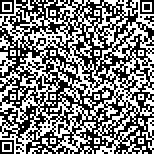Archive > Volume 41 Issue 9 > 2015,41(9):1111-1118. DOI:10.7519/j.issn.1000-0526.2015.09.008 Prev Next
Numerical Simulation of Urban Ponding in Beijing
- Article
- Figures
- Metrics
- Preview PDF
- Reference
- Related
- Cited by
- Materials
Abstract:
Based on the complex terrain and large city characteristics, the geographic information of Beijing was cut into 6458 grids and corresponding channels. Focused on the urban hydrodynamic and hydrographic process, the Beijing Urban Waterlogging (BUW) numerical model was built to simulate the ponding depth. Driven by highresolution precipitation observation, BUW can simulate the spatial distribution of the 21 July 2012 urban ponding in Beijing well, and the variation and max depth under concave bridges are close to actual condition too. In the scene of 2yr Return Period (2RP), there are some isolated ponding points inside the 4Ring Road. The depth and range of ponding increase in 10RP and 50RP. Under 100RP, there is servere pondings within the whole 5Ring Road with most exceeding 50 cm in the south. Facing the rainfall at the 21 July 2012 level, urban drainage will not be improved obviously with 20% of pipe diameter (20%+PD) broadening. The ponding gets relieved distinctly between the Roads of 4Ring and 5Ring and slightly inside the 4Ring in 60%+PD experiment. When the pipe diameter is broadened continuously, there is only shallow ponding between the 2Ring and the 4Ring in 100%+PD experiment and no ponding insides the 6Ring in 140%+PD experiment.
Keywords:
Project Supported:
Clc Number:


Mobile website









